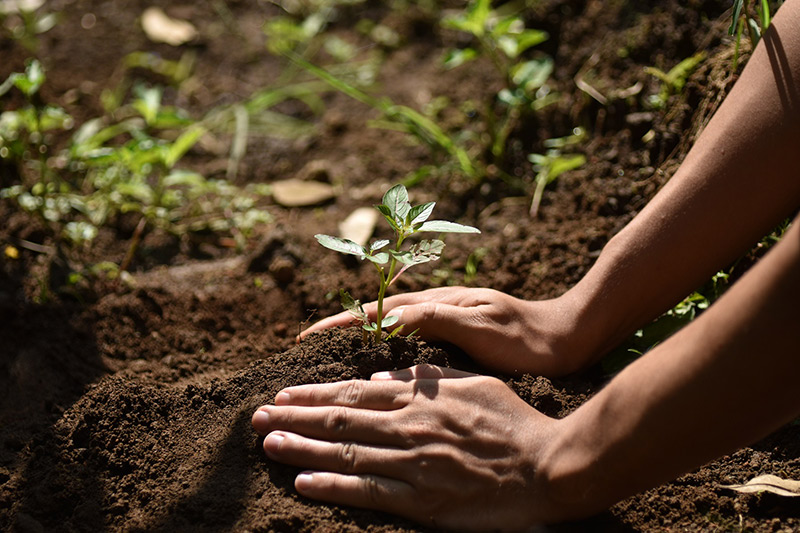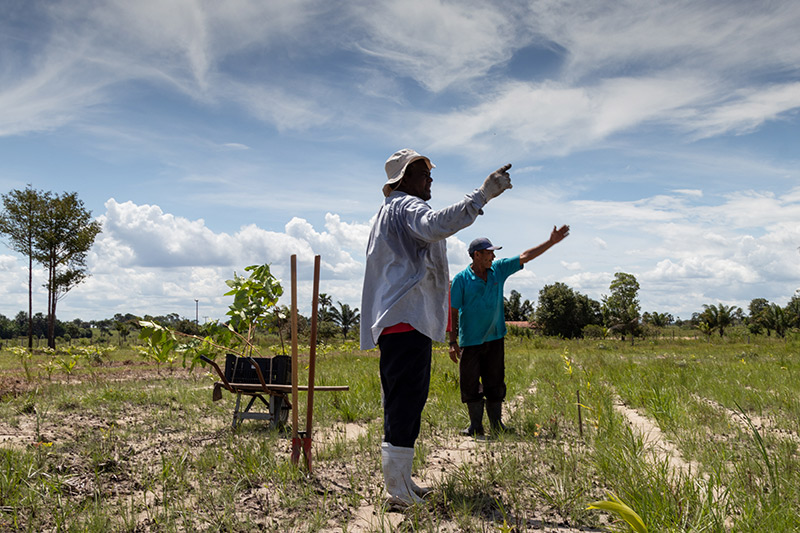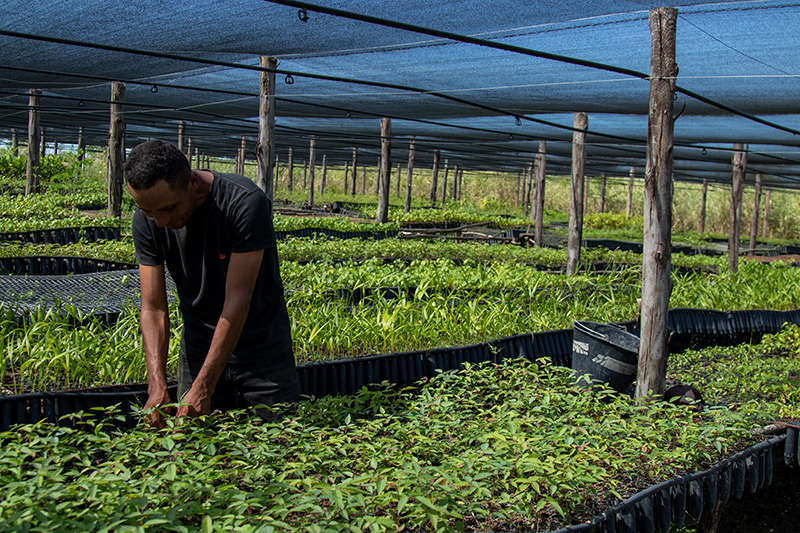THE CONTEXT
The situation we face today demands urgent action. The year 2024 recorded the highest temperatures in history, while humanity may have already crossed seven of the nine planetary boundaries, including carbon concentration in the atmosphere and biodiversity loss. Science is clear: the climate crisis we face today is caused by human actions, especially the emission of greenhouse gases. Extreme weather events are becoming increasingly frequent, highlighting the need for immediate and robust responses.
In this context, nature stands out as our greatest ally. Nature-based Solutions (NbS) — including landscape restoration — account for at least 30% of the action needed to tackle the climate crisis. As an accessible and scalable “technology,” nature can remove large amounts of carbon dioxide from the atmosphere while simultaneously delivering multiple essential benefits for people, such as water and food security, economic opportunities, cultural values, and well-being.
Worldwide, it is estimated that one billion hectares of degraded or deforested land could be restored without compromising local communities’ food production. In Brazil, the conditions for restoration are especially strong: the country has already set ambitious national targets, such as restoring 12 million hectares by 2030, and assumed relevant international commitments, including the Paris Agreement.
To turn these commitments and benefits into tangible results, Conservation International (CI-Brazil) leads a broad movement to accelerate and scale up landscape restoration, working in partnership with local communities, governments, and the private sector.
WHAT IS LANDSCAPE RETORATION
Ecological restoration seeks to recover the native vegetation of degraded or deforested areas, helping to reestablish nature’s balance. It can be implemented through different techniques, such as seedling planting or the removal of invasive species – while also giving space for nature itself to resume its regeneration process.
WHY RESTORE?
CLIMATE BENEFITS
PEOPLE BENEFITS
Return on Investment
BIODIVERSITY BENEFITS
SCALING UP RESTORATION IN BRAZIL
Since 2017, we have been advancing our mission to expand the benefits of large-scale restoration in the Amazon, Atlantic Forest, and Cerrado.
+ 58K
hectares under restoration
+ 146M
native seedlings planted
native seedlings planted
+ 145K
jobs created in local communities
+ 762K
tons of CO₂ to be removed from the atmosphere over 30 years
Our goal: 500k hectares under restoration in Brazil by 2030.
HOW WE WORK
To achieve these results, our specialized team works in collaboration with local communities, governments, companies, nonprofit organizations, restoration collectives, and international institutions. CI-Brazil structures its strategy around three main approaches that aim to maximize the impact and scalability of projects while strengthening the restoration sector.

PILOT

MARKET

POLICY
We work in collaboration with governments and institutions to strengthen governance and create a regulatory environment that supports large-scale restoration. This approach encompasses the most wide-reaching activities, involving large territories, rules and regulations, stakeholders, and decision-making processes at subnational or national levels.
The Amazon Sustainable Landscapes Project (ASL), for example, aims to restore 28,000 hectares of the Amazon through assisted natural regeneration and active restoration. The initiative adopts an integrated approach that strengthens local governments, stimulates a sustainable forest-based economy, and expands regional cooperation among key partners in protecting biodiversity and nature’s contributions to people.
WHERE WE WORK?
Territories with CI-Brazil’s landscape restoration projects in 2025. Credit: Conservation International / Andre Justen.
.png?sfvrsn=338adcf0_0)
EXPLORE OUR INITIATIVES
SUBSCRIBE TO OUR NEWSLETTER
By submitting this form to receive the "Restauração na Rede" newsletter, I acknowledge and authorize the sharing of information with Conservation International, in accordance with the organization’s privacy policy.
CONTACT US
Looking to build high-impact partnerships? Get in touch with our team and let's grow solutions for a possible future, together.
?&auto=compress&auto=format&fit=crop&w=1440&h=900)
